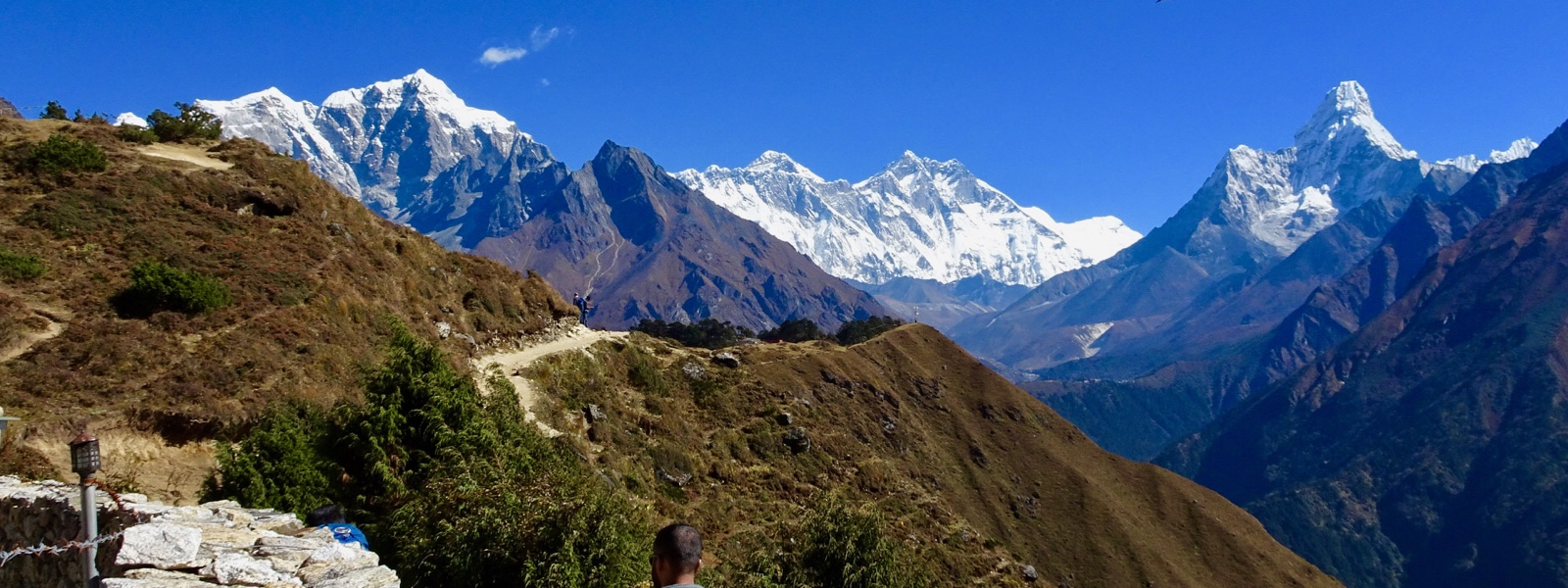
While trekking Everest Base Camp, you will conservatively cover more or less 130 kilometers/80 miles on average. Everest Base Camp Trek Distance might get affected according to your hiking schedule.
While covering this distance, you will walk passing the variety of landscapes, changed vegetation, deep river valleys reaching the base of Mt. Everest and other neighboring peaks.
This 130 kilometers for 11 days might be or might not be sound like a long-distance depending on your previous trekking experiences.
In case, you have covered long journeys like Annapurna Circuit Trek- 160-230km, Manaslu Circuit Trek-177km, Jiri to Everest Base Camp Trek-185km, this is a shorter one and if you have experience of short treks like Ghorepani Poonhill Trek-40km, Langtang Valley Trek-77 km, this is the longer one.
The journey to Everest Base Camp usually begins after a short but scenic flight to Tenzing Norgay Airstrip, Lukla-one of the most thrilling airport in the world where the trekking distance countdown begins.
You shall walk passing numerous Sherpa settlements, lustrous greeneries of Sagarmatha National Park, torrential river, airy suspension bridges, and rhododendron blossoms, you reach Namche, Tengboche, Dingboche, Lobuche, Gorekshep, and finally Everest Base Camp.
Flowing the same route, you shall get back to Lukla and fly back to Kathmandu before your final departure. This article shall explain the daily distance, trek difficulty, best month to trek, and alternative route for this trek in detail. A sample itinerary with the daily distance breakdown is presented clearly.
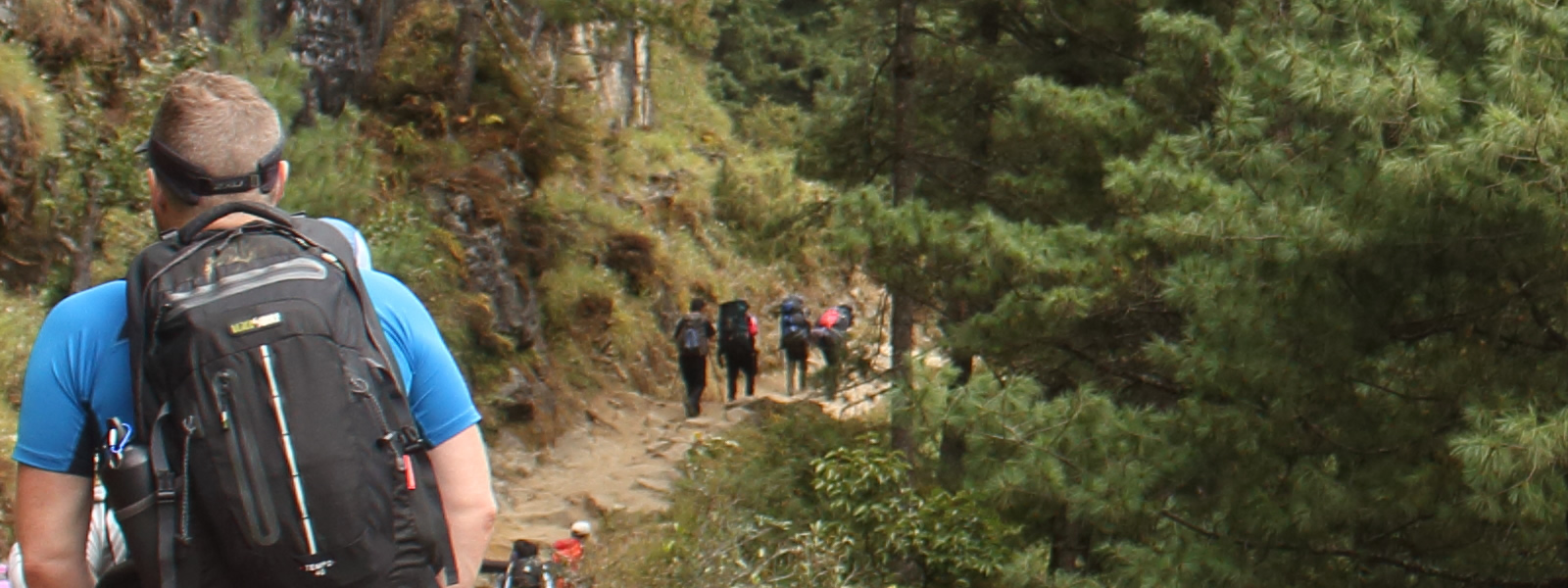
Tentatively, Everest Base Camp trek distance covers 130 kilometers on the round trip from and to Lukla. Walking 65 kilometers, you reach Everest Base Camp, and to return, you need to cover approximately the same distance.
In just 11 working days, you will cover this distance and need to walk 10-15 (sometimes 20-22) kilometers a day in the rough terrains, rocky ridges, glacial moraines, and steep trails.
Adventurers need to walk 5-7 hours a day except on the acclimatization days (normally there will be two acclimatization days). I have maintained a detailed itinerary with distance, duration, and elevation below.
Day 1: Fly Kathmandu to Lukla and trek to Phakding
Trek distance: 9 km/5.6 miles
Trek duration: 3:3-4 hours
Starting elevation: 1350m/4429ft
Ending elevation: 2,652m/8,700 ft
Day 2: Trek from Phakding to Namche Bazaar
Trek distance: 11 km/6.8 miles
Trek duration: 6-7 hours
Starting elevation: 2,652m/8,700 ft
Ending elevation: 3,440m/11,283ft
Day 3: An acclimatization day at Namche (side trip to Everest View Hotel)
Day 4: Trek from Namche Bazaar to Tengboche
Trek distance: 10 km/6.2 miles
Trek duration: 5-6 hours
Starting elevation: 3,440m/11,283ft
Ending elevation: 3,860m/12,660ft
Day 5: Trek from Tengboche to Dingboche
Trek distance: 12 km/7.5 miles
Trek duration: 5-6 hours
Starting elevation: 3,860m/12,660ft
Ending elevation: 4,410m/14,464ft
Day 6: Acclimatization day at Dingboche and side trip to Nagarjun hill
Day 7: Trek from Dingboche to Lobuche
Trek distance: 12 km/7.5 miles
Trek duration: 5-6 hours
Starting elevation: 4,410m/14,464ft
Ending elevation: 4,910m/16,105ft
Day 8: Trek from Lobuche to Gorakshep to EBC and return Gorakshep
Trek distance: 13 km/8 miles
Trek duration: 7-8 hours
Starting elevation: 4,910m/16,105ft
EBC elevation: 5,364m/17,594 ft
Ending elevation: 5,181m/16,994 ft
Day 9: Hike to Kalapatthar and Back to Pheriche
Trek distance: 18 km/11.2 miles
Trek duration: 7-8 hours
Starting elevation: 5,181m/16,994 ft
Kalapatthar elevation: 5,545m/18,192ft
Ending elevation: 4,371m/14,340 ft
Day 10: Trek from Periche to Namche Bazaar
Trek distance: 22 km/13.7 miles
Trek duration: 8-9 hours
Starting elevation: 4,371m/14,340 ft
Ending elevation: 3,440m/11,283ft
Day 11: Trek from Namche Bazaar to Lukla
Trek distance: 21 km/13 miles
Trek duration: 8-9 hours
Starting elevation: 3,440m/11,283ft
Ending elevation: 2,860m/9,383ft
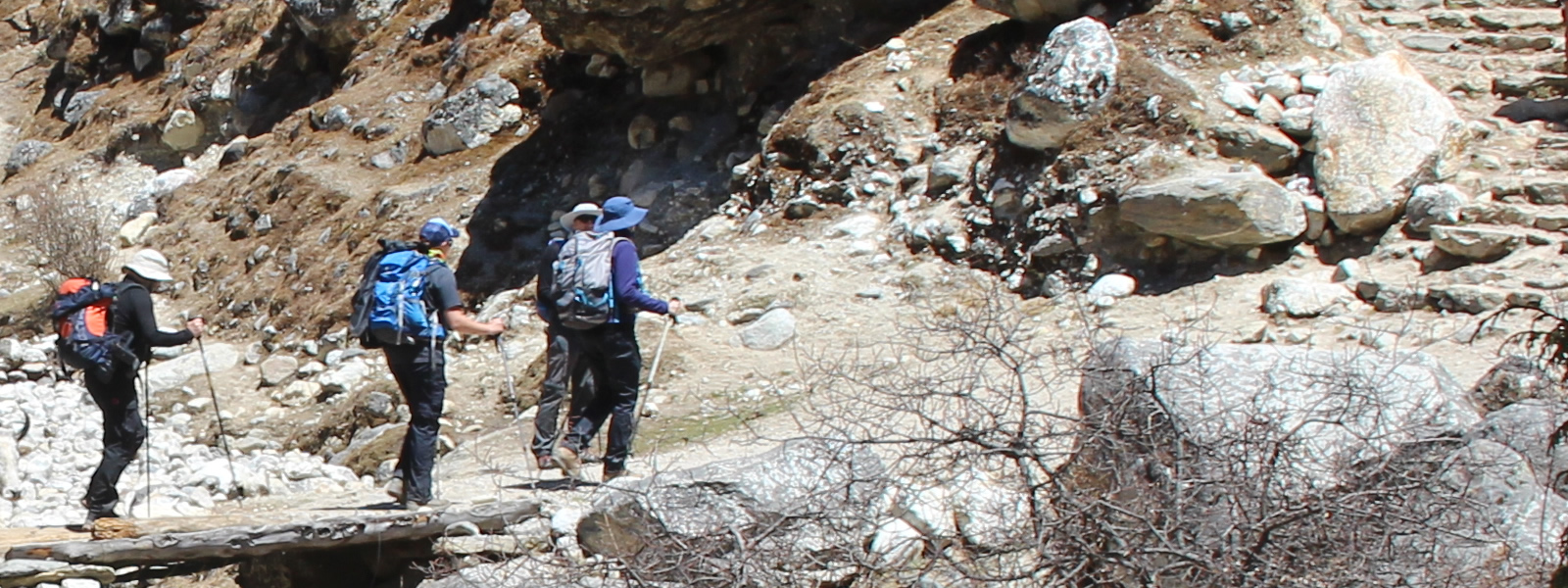
Trekking in the Himalayan sections of Nepal is not a flat walking on the surfaces/plain lands instead should pass several ups and downs.
Covering the distance of 130 kilometers/80 miles, one needs to walk around 15 kilometers/9.3 miles each day to complete this journey within 11 working days. Saying so, you should not be an athlete or require to have super fitness to complete your dreamed trek.
The journey to Everest Base Camp commences from Lukla-2860m and climbs about 2500m reaching the base of the tallest peak at 5365m.
The difficulty of the trek to Everest may be influenced by a plethora of reasons; your backpack weight, trek with or without a guide, the season you choose, the preparation you did beforehand, and many others.
A physically fit person with strong mental determination and some prior exercises can complete this journey in a comfortable way.
You must include a minimum of two acclimatization days to be adjusted in the environment; otherwise can have a chance to be suffered from Acute Mountain Sickness.
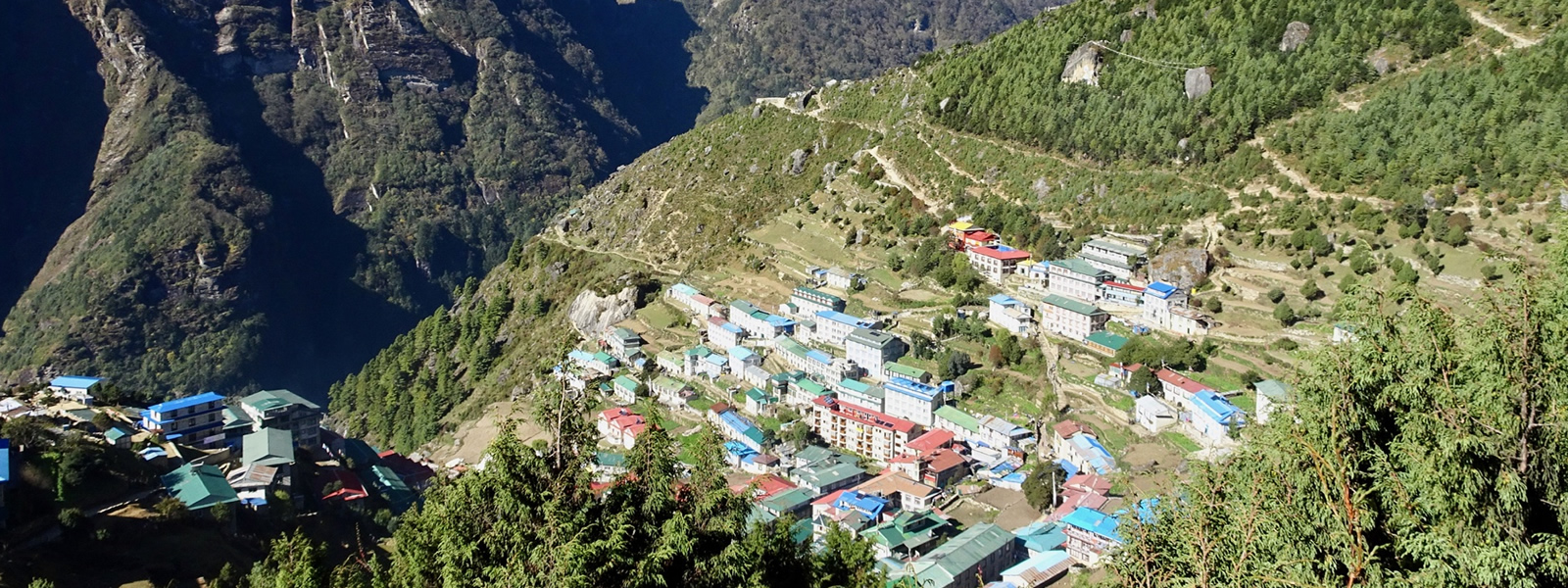
Everest Base Camp Trek is possible throughout the year regardless of any particular season.
But as it is a high elevated journey, must be careful while trekking in the winter months (December to February), and the participation-related problems (flood, landslide, and leeches) can affect your journey in the summer months (June to August).
Rest two seasons are perfect choices for trekking Himalayas including Everest. Stable weather circumstances, mild temperature, regularity in the flights, spectacular views, crystal skies make your journey to Everest in spring (March to May) and autumn (September to December) enjoyable and memorable.
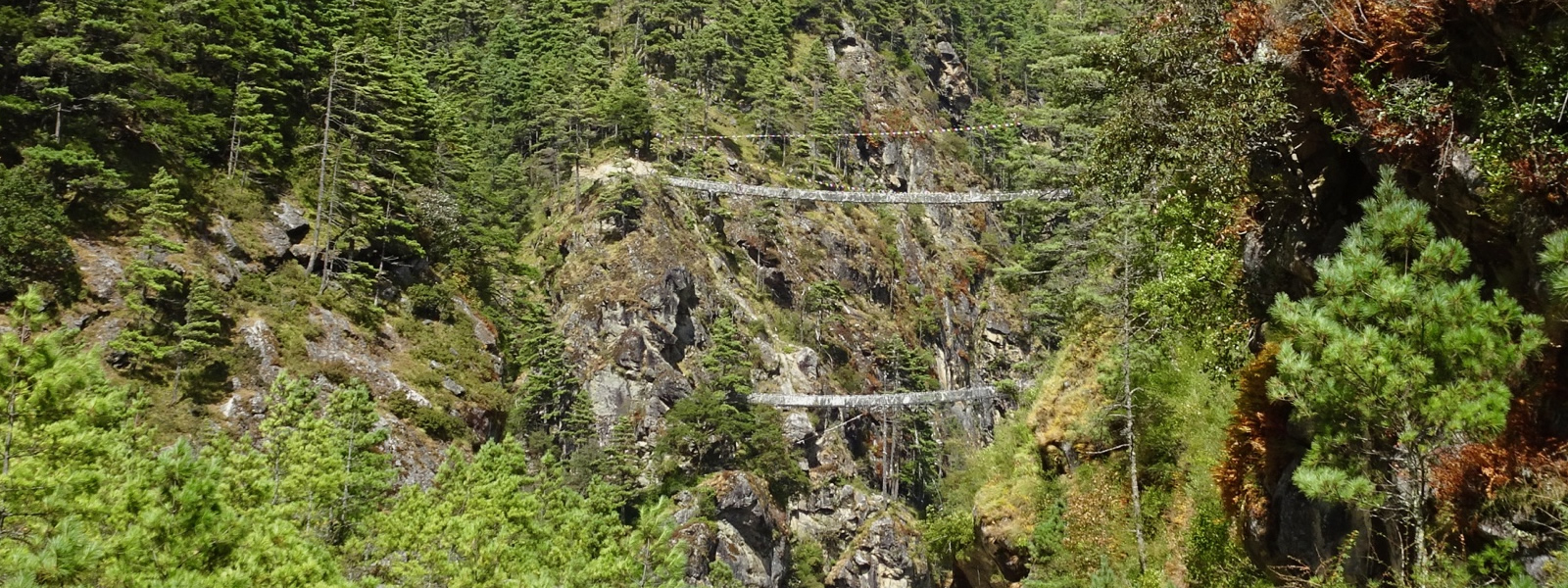
Jiri to Everest Base Camp trek
Journeying to Everest Base Camp choosing this route follows the footprints of Sir Edmund Hilary and Tenzing Norgay Sherpa, the first successful climbers of Mt. Everest-the tallest peak entire this planet.
Trekking this route is a bit longer but the trail is full of spectacular views of the mountain ranges, torrential rivers, grasslands, terraces, and cultivated lands.
The trek commences from Jiri, a small township of the Dolakha district. Trekking through different ethnic settlements of Brahmins, Chhetris, and Newar people, you adjoin the new route and can trek further to the base camp.
The trekking distance from Jiri to Everest base camp and back Lukla is about 185 Kilometers/115 miles. You will have a steady adaptation to the increasing altitude as the time available on the trek is plenty for a slow ascent.
This route leads you to the serene lake of Gokyo that rests embedded amid the glittering peaks. The less crowded trekking route leads you to admire the turquoise-colored glacial lakes of Gokyo.
Mesmerizing views of landscapes, greeneries, cultivated terraces, high pasturelands, and astonishing sceneries of glittering peaks as Mt. Everest (8848.86m), Cho Oyu(8188m), Makalu (8463m), Lhotse (8414m), and several of their neighboring peaks.
Spending approximately 15 days, one covers 110 kilometers during their journey to Gokyo. Like any other trek in the Khumbu region, the Everest Gokyo Lake trek also takes you through varying altitudes reaching the highest altitude at 5,360 meters at the top of Gokyo Ri.
An easier way to explore Everest region-Everest View/ Everest Panorama Trek offers the visitors to explore a couple of Sherpa settlements, the way of living, and the culture they follow.
Another major highlight of this trek is the panoramic view of the Himalayas from the Tengboche Monastery in the Tengboche village.
The Mt. Everest (8848m), Lhotse (8414m), Nuptse (7861m), Thamserku (6608m), and Ama Dablam (6856m) are the mountains seen along the trek.
Diverse flora and fauna inside the Sagarmatha National Park can be witnessed throughout the trek.
In just 8-10 days you will cover a total distance of approximately 67 kilometers where you will get to witness the natural as well as cultural beauty of this region.
Compared to many other treks, this trek has slightly lesser ups and downs. Nonetheless, it starts from an elevation of 2,840 meters at Lukla and takes you to the highest point of 3,860 meters at Tengboche.
Quite popular as a three passes trek, Everest High Passes Trek leads you to cross three high passes in the Everest region of Nepal i.e. Renjo La Pass (5, 417 meters), Cho La Pass (5, 420 meters), and Kongma La Pass (5, 535 meters) at once.
Everest Three Passes Trek covers the approximate total distance of 166 kilometers (103 miles). This is one of the most exciting treks that offers 360-degree panoramic views of the glacial lakes, mountain ranges, and glaciers.
Along the journey, you shall experience spectacular views of the Himalayas from the different vantage points as Kala Patthar (5545m), Gokyo Ri (5357m), and Chukung Ri (5550m).
Traversing exploring the five glacial lakes of Gokyo and the entire Gokyo valley makes the journey more enjoyable and memorable.
Everest Base Camp Trek distance is one of the major concerns while trekking the foot of Mt. Everest. As already mentioned, it covers 130km in the round if you chose only to hike Everest Base Camp and return via the same route.
If you follow alternative routes as Everest Three Passes Trek, Jiri to Everest Base Camp, Everest Base Camp, and Gokyo, the trek distance might be different. Anyway, Everest Base Camp Trek is a moderately distanced hike in the Nepalese Himalayas.
Leave Your Comment